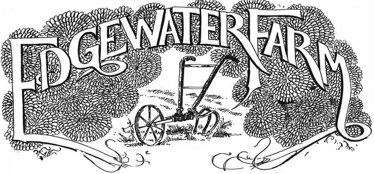GET WITH THE TIMES, WATERMELON IS NOW A FALL CROP
It's early November this morning and the temperature is 23 degrees. Muzzle loading season has started, daylight savings time slapped me and all of this is a shocking surprise to me. I have never experienced such a temperate, blue sky type of fall like this in my 73 years. Working in light work clothing during warm days and not running the wood stove at night...we clearly were not paying attention to the passage of time because we were able to get a pile of farm work done, in comfort. Of course, the illusion of “getting caught up” is indeed only an illusion, but it feels really good to be marshalling at this time of year in relative meteorological comfort.
In past blogs I have often rattled on about weather and climate related issues. This fall has certainly been the upside to climate change. But it is interesting to note that If we had this period of abnormally pleasant and dry weather in the middle of the summer growing season we would be in big trouble. A drought exists now, a very serious one. No open fires or burning is allowed. The brooks are almost dried up, and the groundwater levels in the woods have to be very low. Again we are able to wade the Connecticut River to the Vermont shore in many places along River Road (although it’s a tad chilly in the water for me to lead you across myself...) And the reason that the effects of prolonged weather such as this is not more damaging to the flora in the fields, woods and gardens is because the days are much shorter, sun is a lot weaker and we get just enough moisture from morning fog to maintain what plants are left in those fields and woodlands. So climate change is still very much on the table, and with it comes the down side. We can strategize how to deal with it, and we have a couple of seasons-(fall and winter)- where we do not have to deal with any adverse effects when trying to grow outdoor crops. Were we to have the same weather pattern we have experienced the last two months (warmer than normal-drought ) in May and June we would be hard pressed to grow vegetable crops, even with irrigation. Longer days of hotter than normal heat and no rain for two months would erase half of our efforts to get anything to grow. Seeds would not germinate, transplants would likely wither.
We have seen extreme weather on the news and social media, devastating areas of Florida and North Carolina with recent hurricanes. In the northwest large forest fires are just beginning to die down. And we seem to get more smoke days here as the years progress. So climate change will continue to be the average of extremes, as we are told it would be. We will have to assume we will be confronted by those extremes most years. In the meantime, I am going to take pleasure in the warmer than normal days, lack of early ice and snow and cold temperatures that I so frequently grew up with this time of year as a kid. Sunny blue skies, a few late season bike rides and no real reason to run the woodstove 24-7...what’s not to like?

